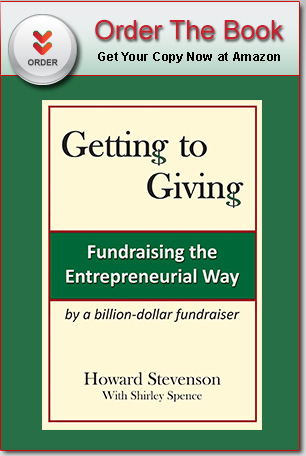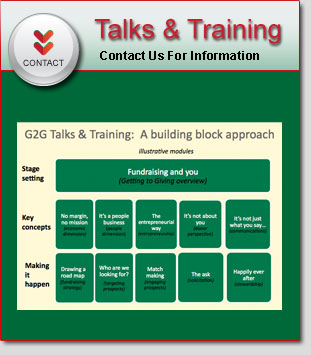As with many things, the short answer is “it depends.”
Your fundraising strategy, organizational complexity, and donor base all have implications for the personal characteristics, skill sets and experience that you’re looking for in your chief fundraiser.
An annual fund is about mass marketing, and needs someone skilled at testing various appeals and running the ones that work. That’s very different from a strategy where big gifts are the goal. For that, you need someone who listens and responds to donor cues, and shines in individual and group settings.
In a small nonprofit, the development director may be an individual contributor role. In large organizations, it may be a third or fourth level manager with hundreds of staff, and multiple internal “clients” (e.g., the Smithsonian includes 19 museums and galleries, and several research centers).
Academic institutions look to their alumni as a donor base, and religious institutions have congregations. If you don’t have a natural affinity group, development is more like a startup “missionary sales” activity than a traditional campaign.
Now, what to look for, in your ideal candidate?
In general, I tend to be less concerned about development experience, and more about personal characteristics and skills. Here’s a checklist of some things to be thinking about, as you develop your profile and talk to candidates.
- Do they believe in the cause? This one is critical. Someone who understands and is passionate about your mission will be a much more credible and effective champion for your organization. If you don’t believe in it, you can’t sell it.
- Do they have a strategic perspective? Will they work well with leadership, and ask the right questions? Do they understand your economic model, and where fundraising fits in the picture? Can they translate that into long and short term fundraising strategies?
- Are they excellent communicators? Listening as well as talking is critical, as is the ability to look at written materials with a sense of nuance and sensitivity to purpose. Emotional intelligence is a factor too, to be able to relate to people within and beyond the organization.
- Are they “of the world”? When they walk into a room, are they credible and compatible with key stakeholders? Is there a good cultural fit? Be creative; someone from a high-tech firm might work well for an educational institution committed to transforming engineering education.
- Do they have the specific skills required? That list will vary, depending on the factors discussed above. If significant giving is involved, that includes cold call skills with a good balance of ego (to bounce back or walk away) and humility (for letting others be the closers, as appropriate).
Developing the job description is just one part of the selection process, of course. Who will be involved, and how?
For larger organizations, it may be useful to use an executive search firm. For any organization, it’s important that your leadership be directly involved, and that the selection committee includes key stakeholder representatives. It can be useful to get finalists in front of a group to see their “public persona”, and introduce them to them to a few major donors as well.
Before closing, I do feel compelled to point out a major challenge in this area: the “revolving door” phenomenon among development directors.
You may have read about it (http://philanthropy.com/article/Half-of-Fundraisers-in-the-Top/136577/) and/or experienced it first-hand. It reflects dissatisfaction on both sides of the fence – among nonprofit leadership and development directors. It’s not enough to hire a great person; you need to be able to keep them and forge a partnership, for fundraising success.



